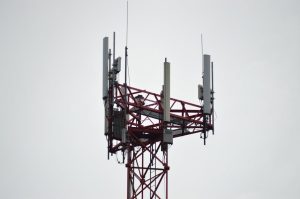MEO Satellites: Understanding the Technology and Applications of Medium Earth Orbit Satellites

MEO Satellites: Understanding the Technology and Applications of Medium Earth Orbit Satellites
MEO satellites, or Medium Earth Orbit satellites, are a type of satellite that operates at an altitude of approximately 2,000 to 36,000 kilometers above the Earth’s surface. This range allows MEO satellites to provide a unique set of benefits and applications for telecommunications, navigation, and Earth observation. In this article, we will delve into the world of MEO satellites, exploring their technology, applications, and the impact they have on our daily lives.
MEO satellites are often compared to their Low Earth Orbit (LEO) and Geostationary Earth Orbit (GEO) counterparts. While LEO satellites have a much lower altitude and are typically used for Earth observation and remote sensing, GEO satellites are stationed at an altitude of approximately 36,000 kilometers and are often used for telecommunications and broadcasting. MEO satellites, on the other hand, offer a mid-range solution that combines the benefits of both LEO and GEO satellites.
Applications of MEO Satellites
MEO satellites have a wide range of applications, including telecommunications, navigation, and Earth observation. One of the primary uses of MEO satellites is for telecommunications, where they provide a high-gain, low-latency signal that can be used for voice, data, and video transmission. This makes them ideal for applications such as mobile phone networks, broadband internet, and satellite TV.
In addition to telecommunications, MEO satellites are also used for navigation. The Global Positioning System (GPS) is a network of MEO satellites that provide location information to GPS receivers on the ground. This system is widely used for navigation, mapping, and tracking, and is an essential component of modern transportation systems.
Earth observation is another key application of MEO satellites. These satellites can be used to monitor the environment, track weather patterns, and predict natural disasters. They can also be used for remote sensing, where they capture detailed images of the Earth’s surface for use in agriculture, forestry, and urban planning.
Technology Behind MEO Satellites
MEO satellites are equipped with advanced technology that enables them to operate efficiently and effectively. One of the key components of a MEO satellite is its propulsion system, which is used to maintain the satellite’s orbit and perform any necessary maneuvers. MEO satellites also have a power generation system, which typically consists of solar panels and batteries.
In terms of communication, MEO satellites use a variety of frequencies and protocols to transmit data. They typically operate in the L-band, C-band, or Ku-band frequency ranges, and use protocols such as TCP/IP or UDP to transmit data packets. The antennas used on MEO satellites are also highly advanced, with some featuring phased array technology that allows for electronic beam steering and shaping.
Challenges and Limitations of MEO Satellites
While MEO satellites offer many benefits, they also have some challenges and limitations. One of the primary challenges is the high cost of launching and operating a MEO satellite. The launch process is complex and expensive, and the satellite must be designed to withstand the harsh conditions of space.
Another challenge facing MEO satellites is the risk of interference from other satellites or terrestrial systems. This can cause signal degradation or loss, which can have serious consequences for applications that rely on these satellites. Additionally, MEO satellites are also vulnerable to space weather events, such as solar flares and cosmic radiation, which can cause damage to the satellite’s electronics and disrupt its operation.
Conclusion
In conclusion, MEO satellites are a vital component of modern telecommunications, navigation, and Earth observation systems. Their unique orbit and advanced technology make them an ideal solution for a wide range of applications, from mobile phone networks to GPS navigation. While they face some challenges and limitations, the benefits of MEO satellites make them an essential part of our daily lives.




